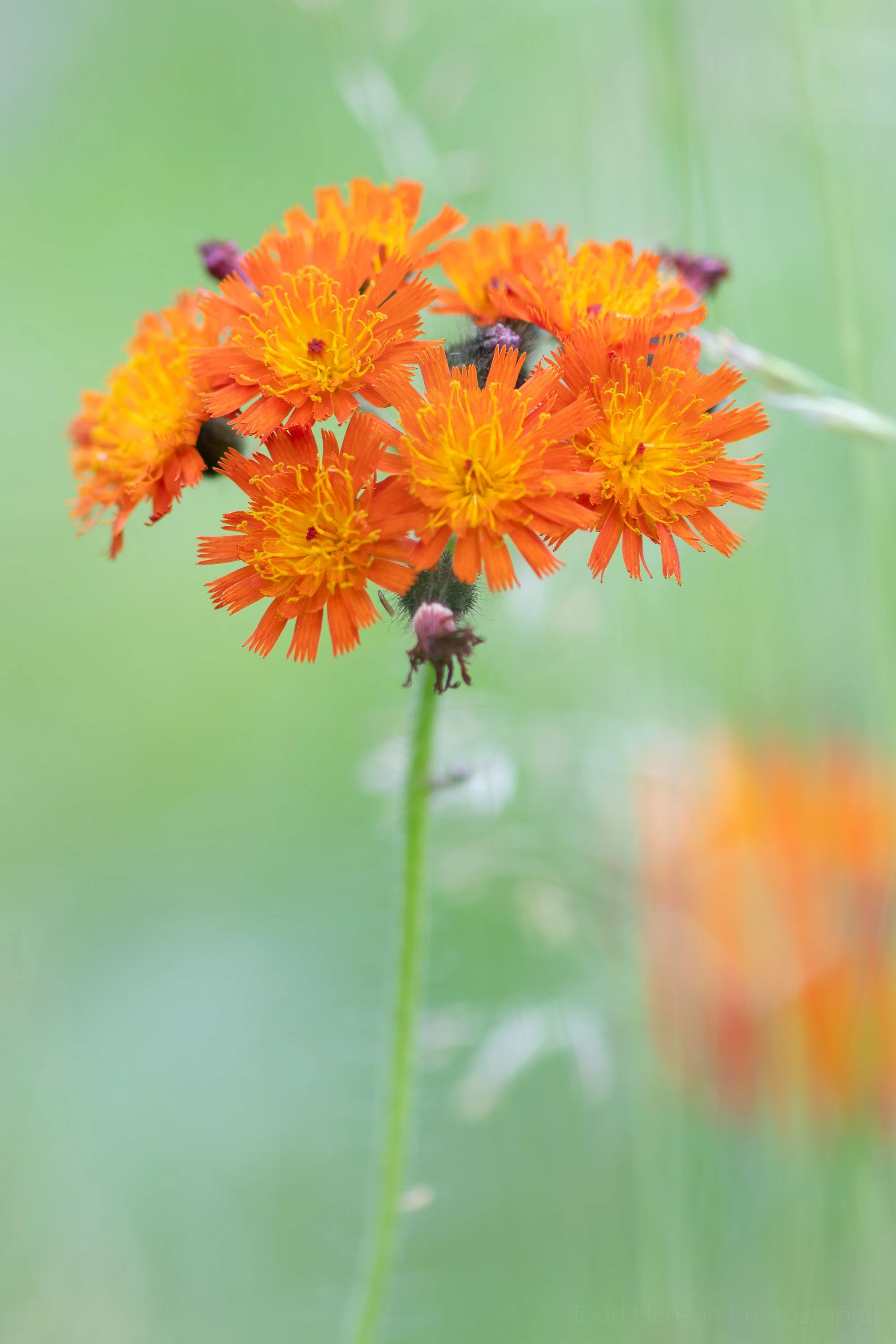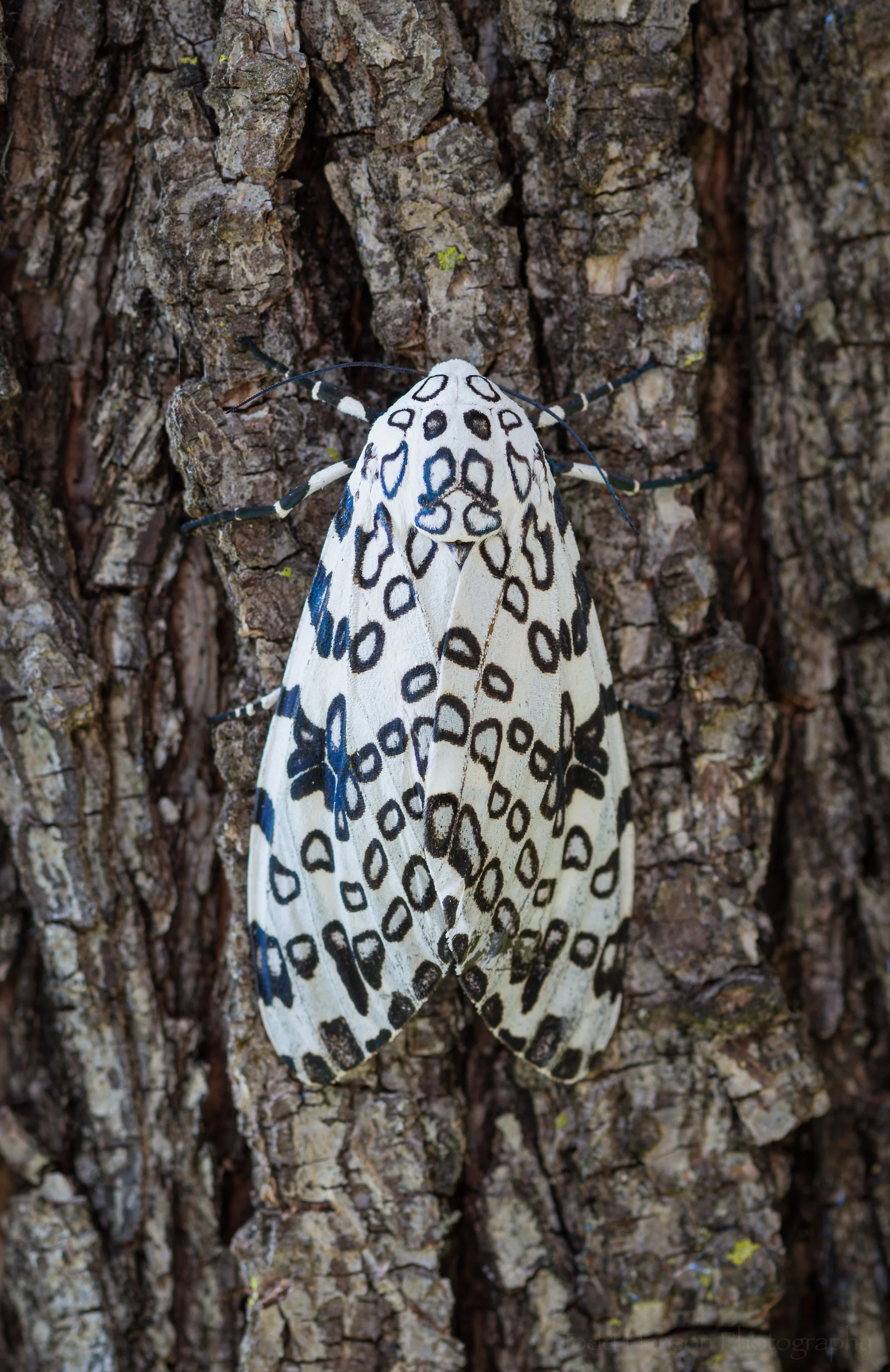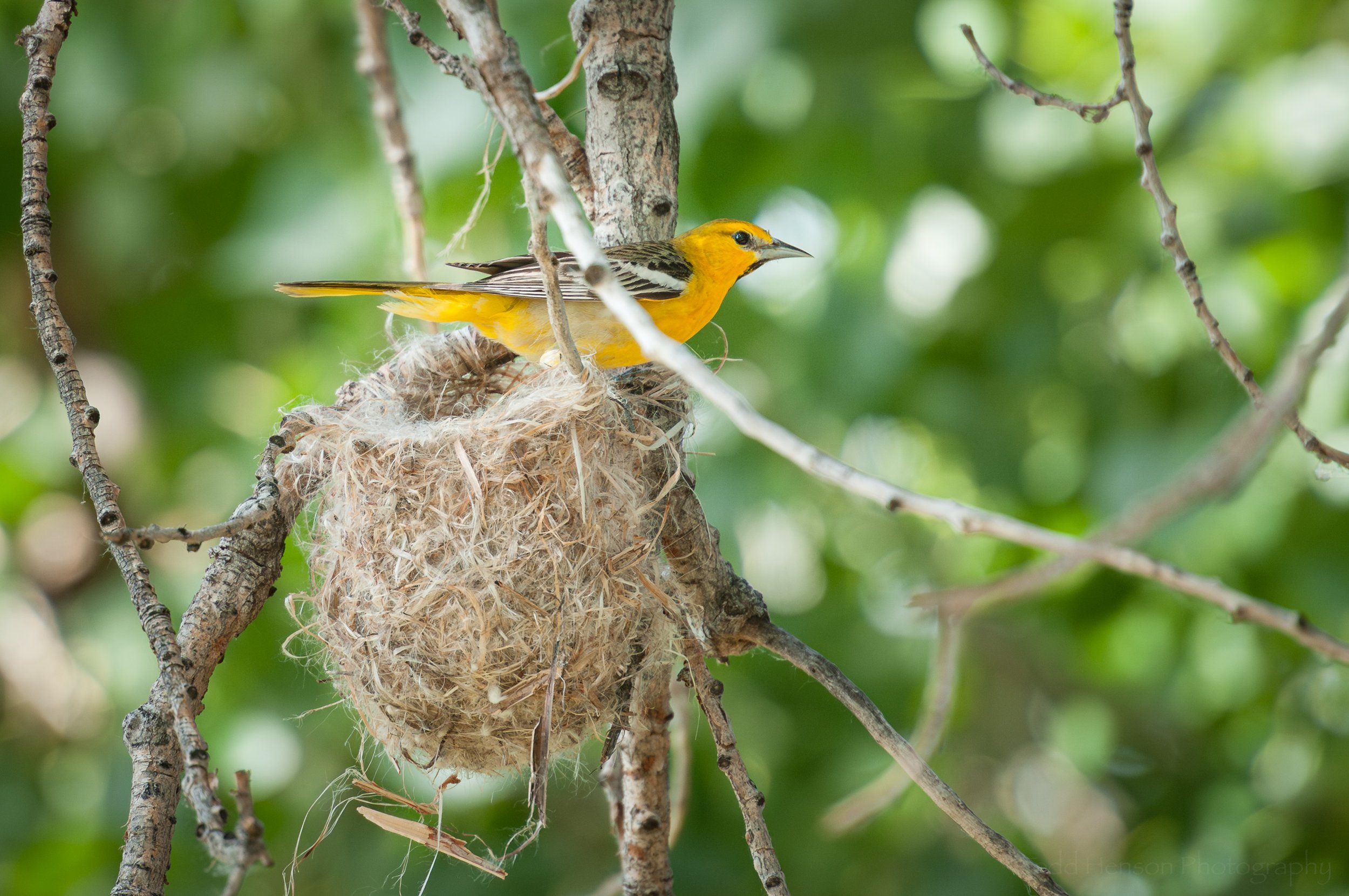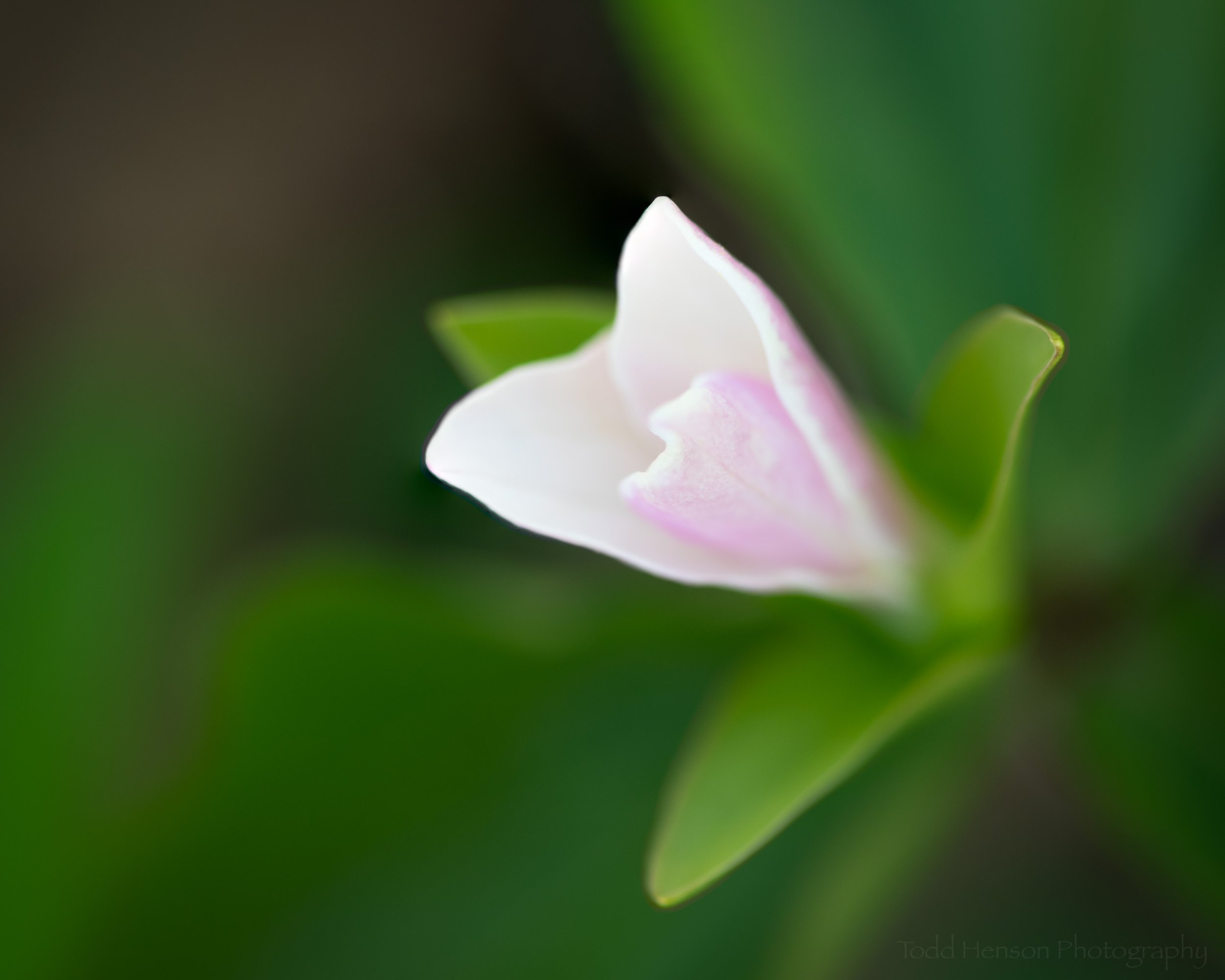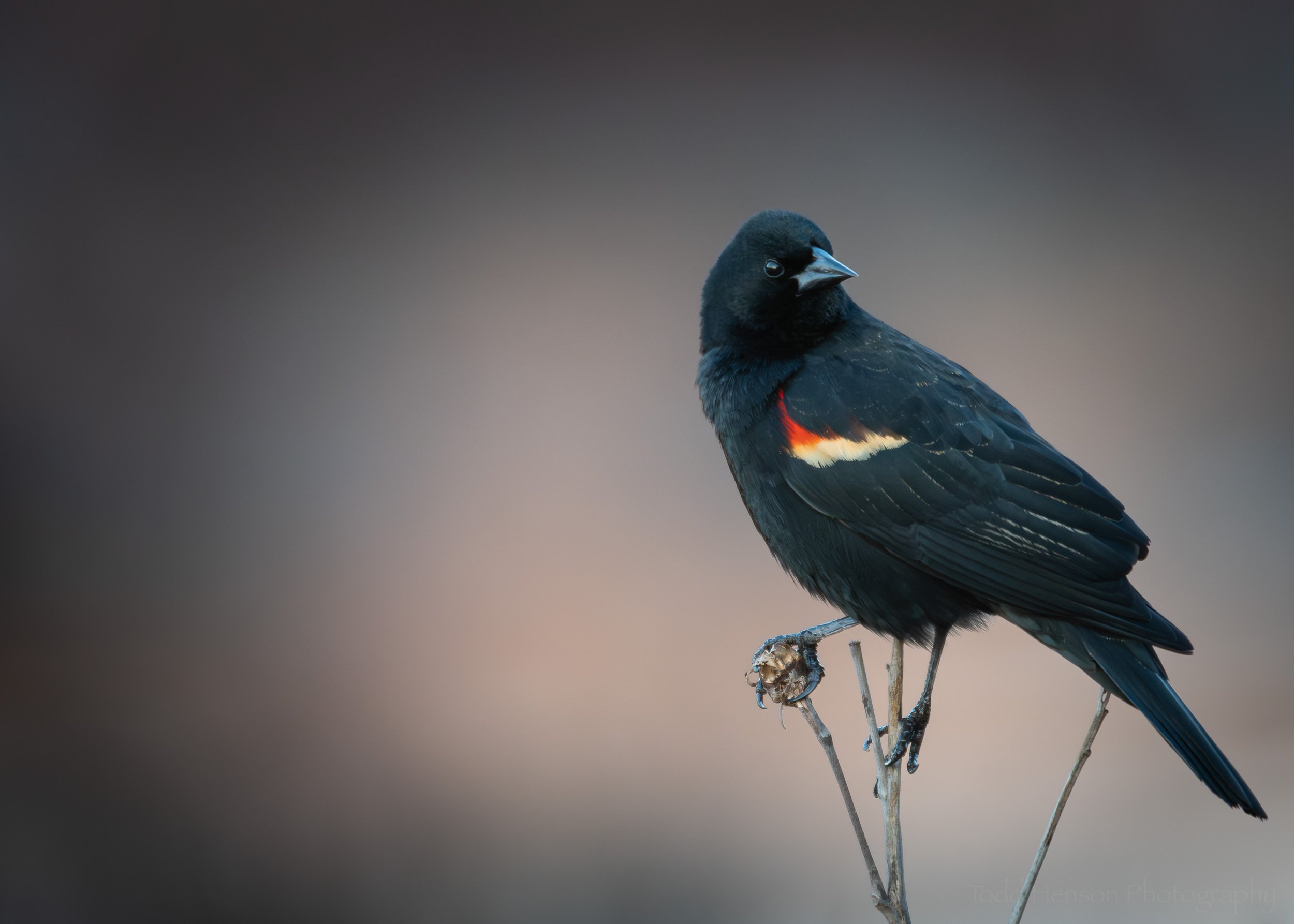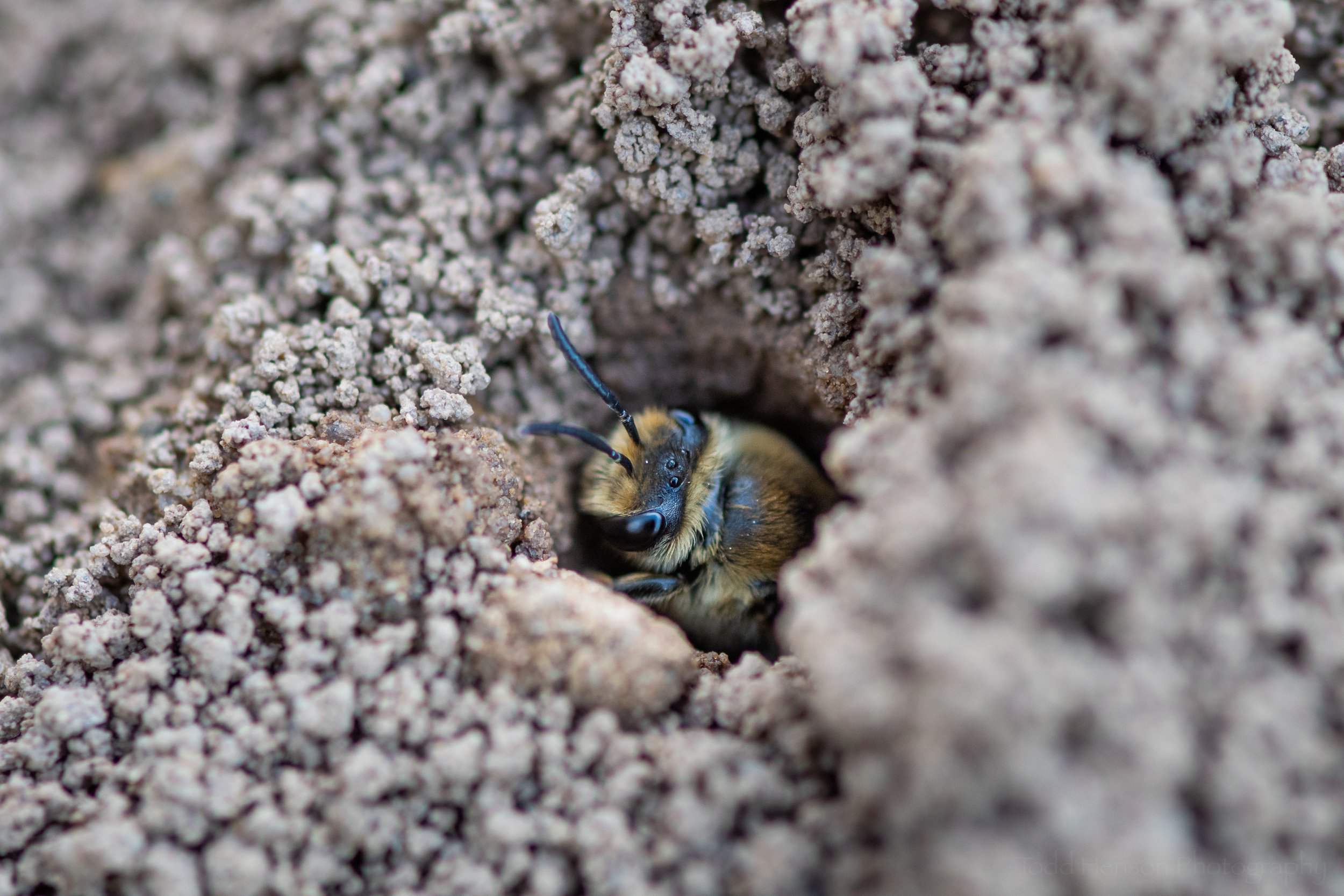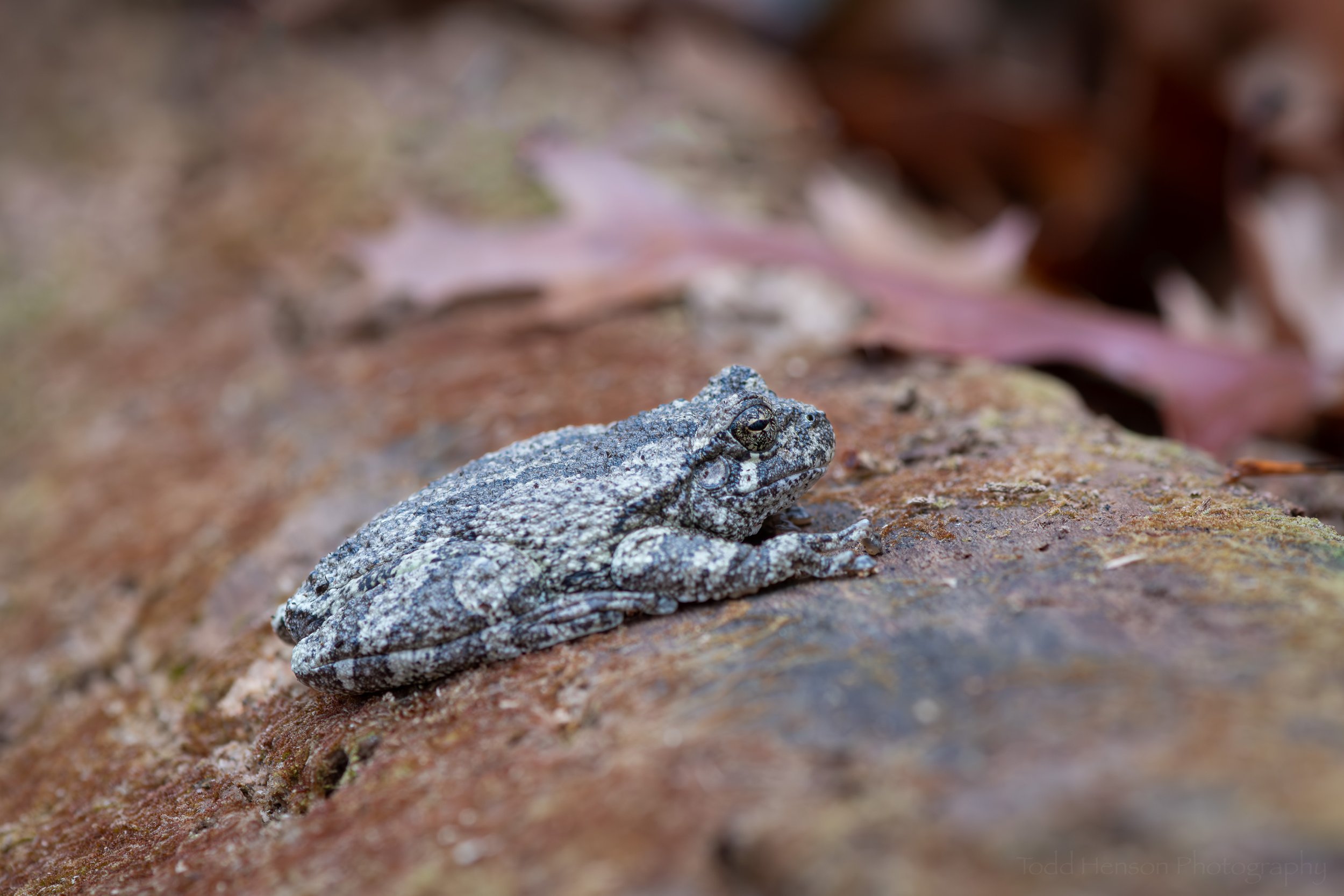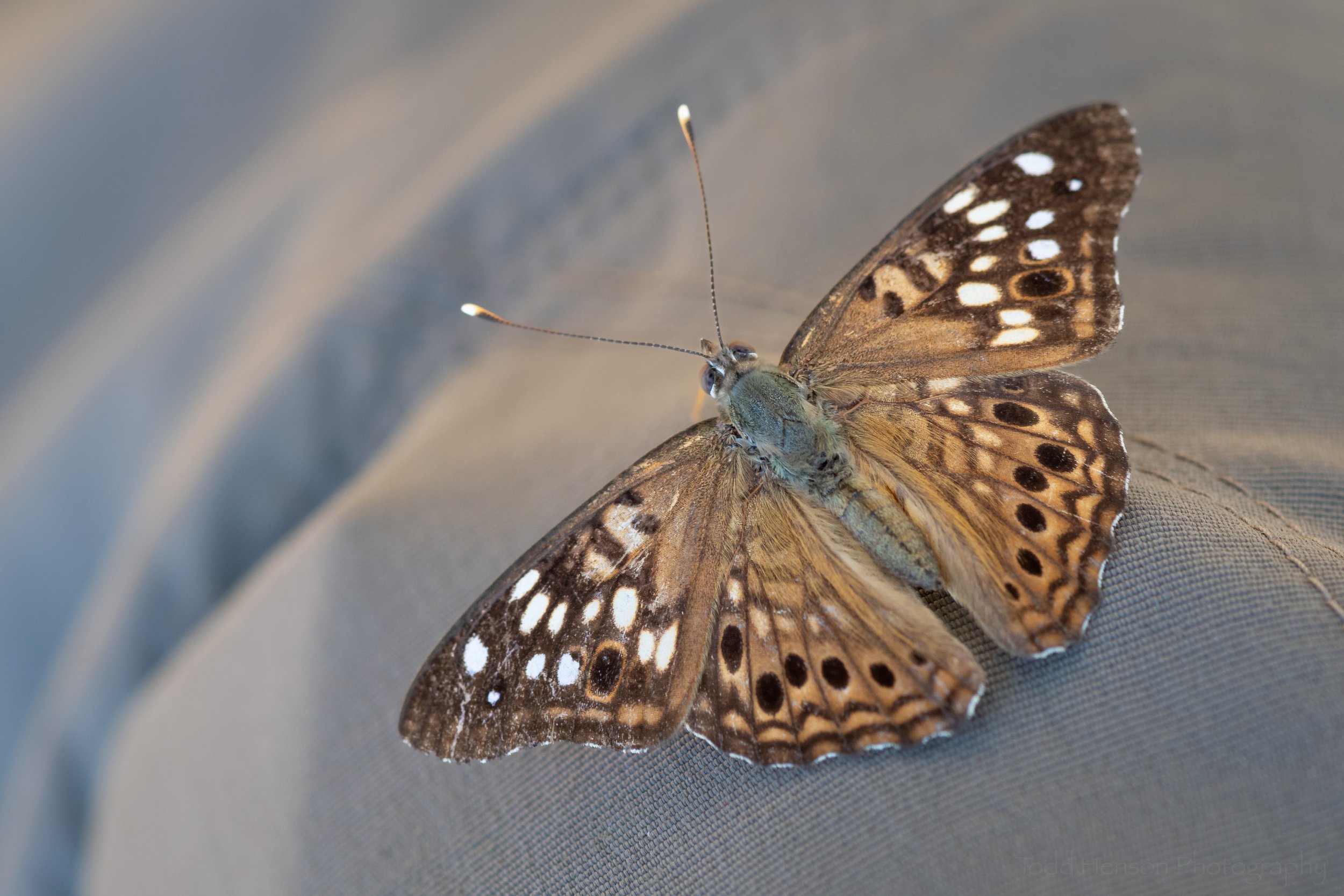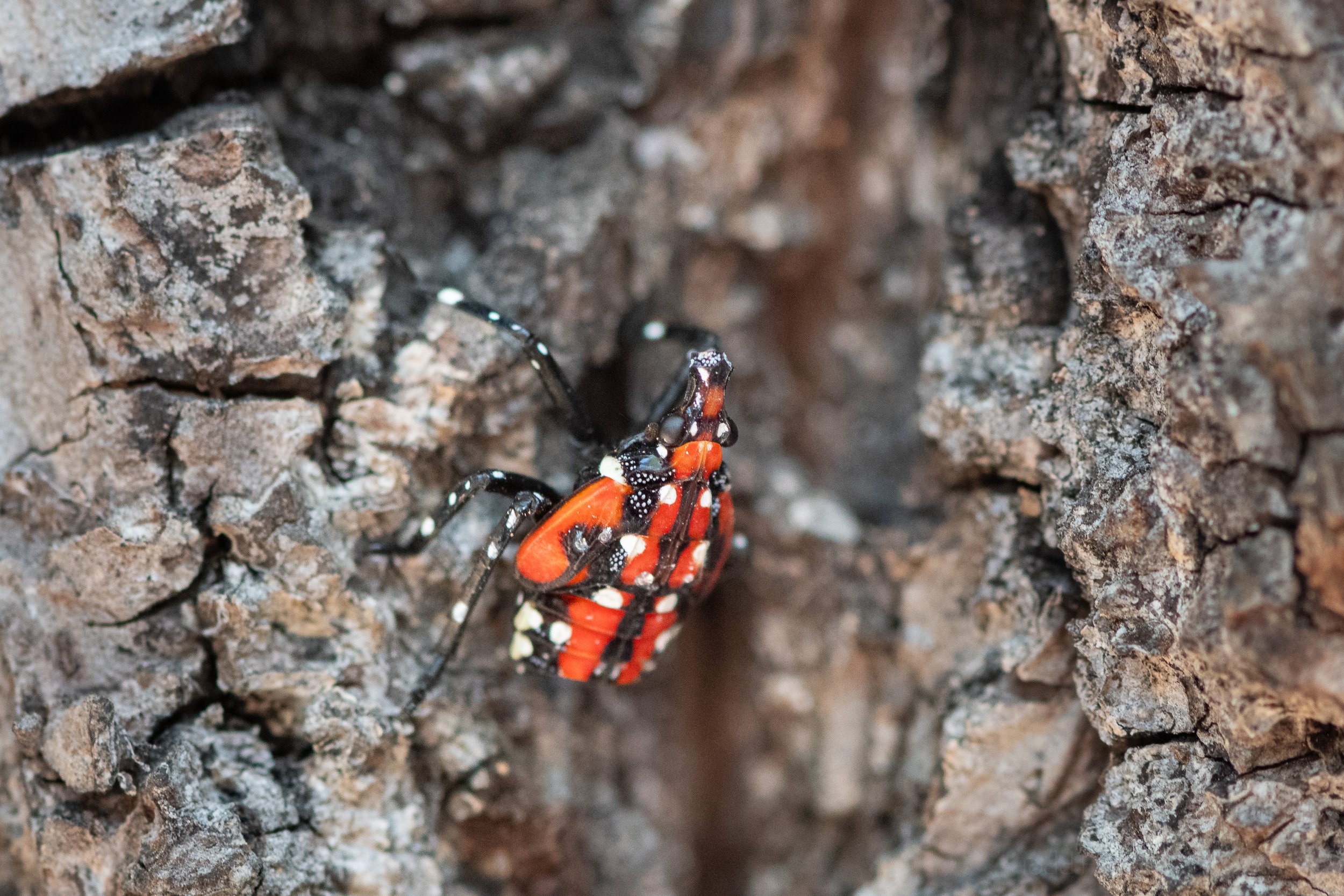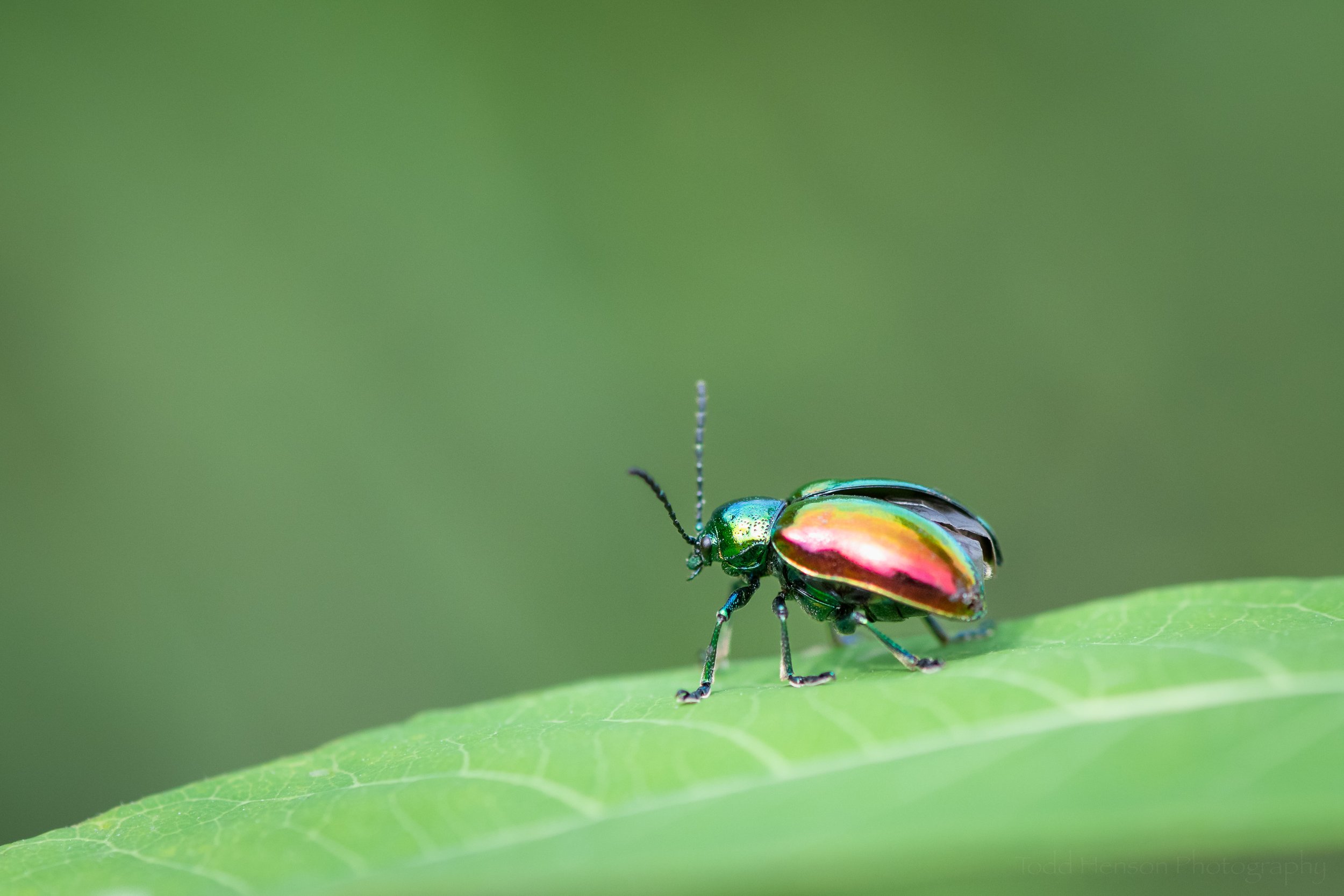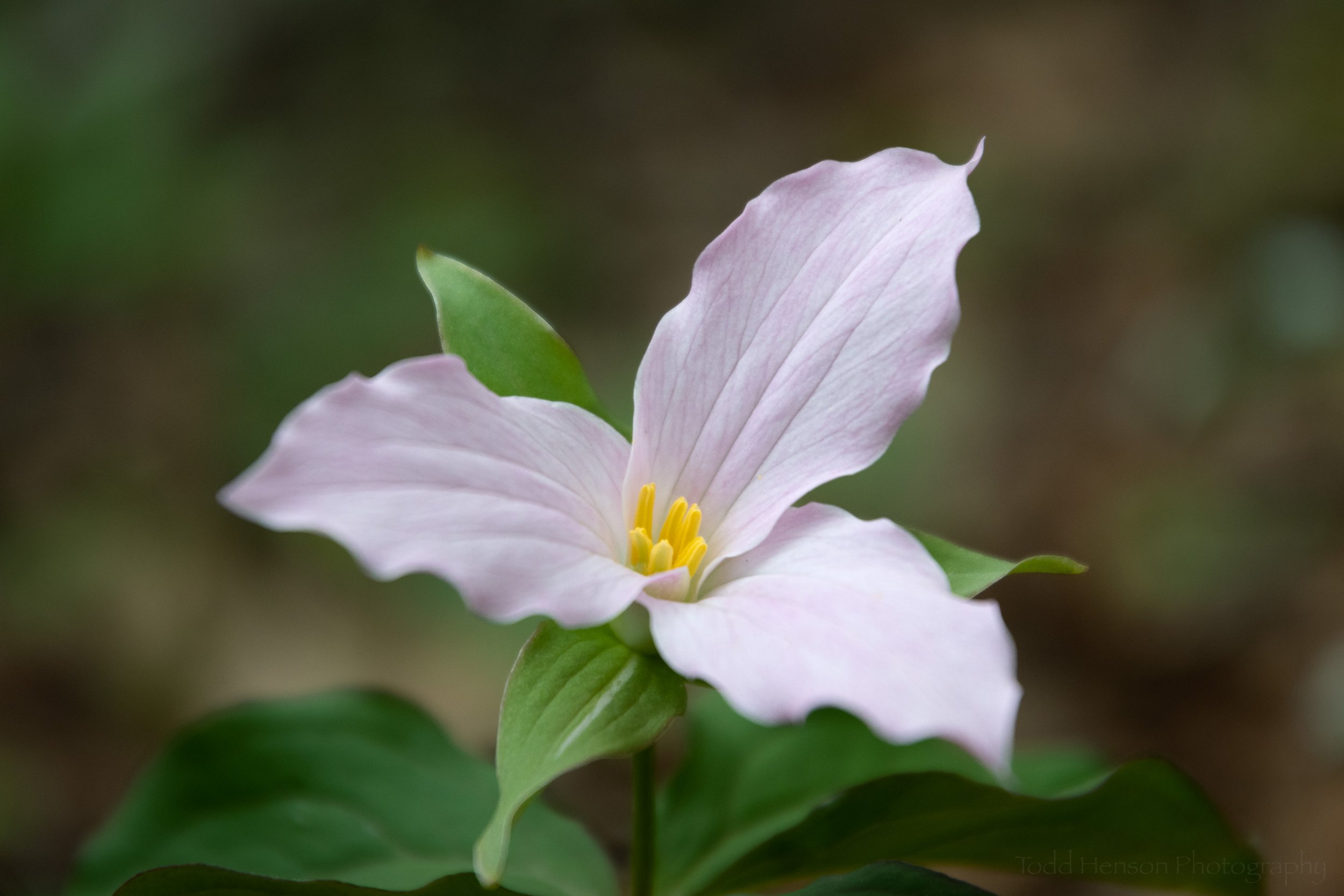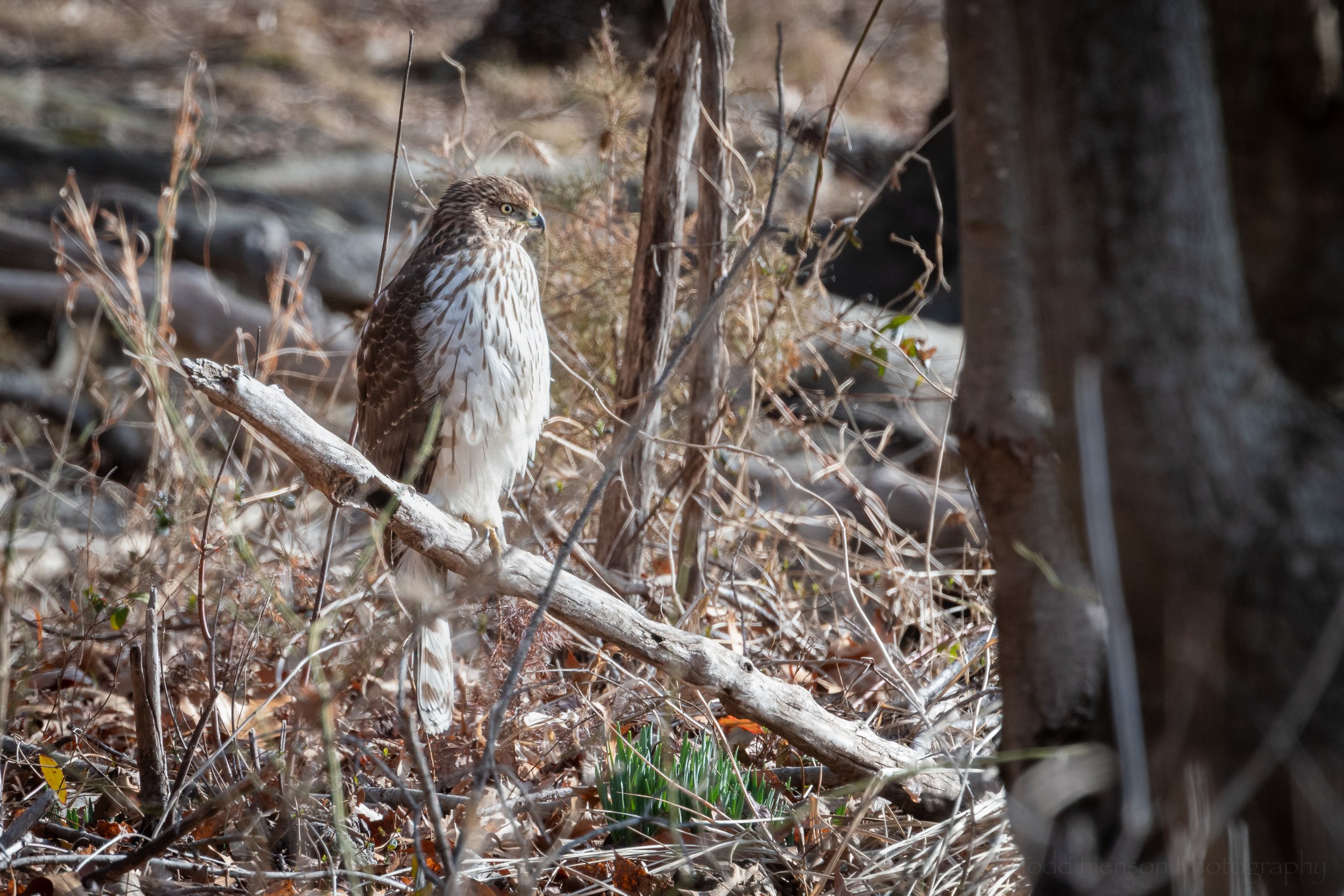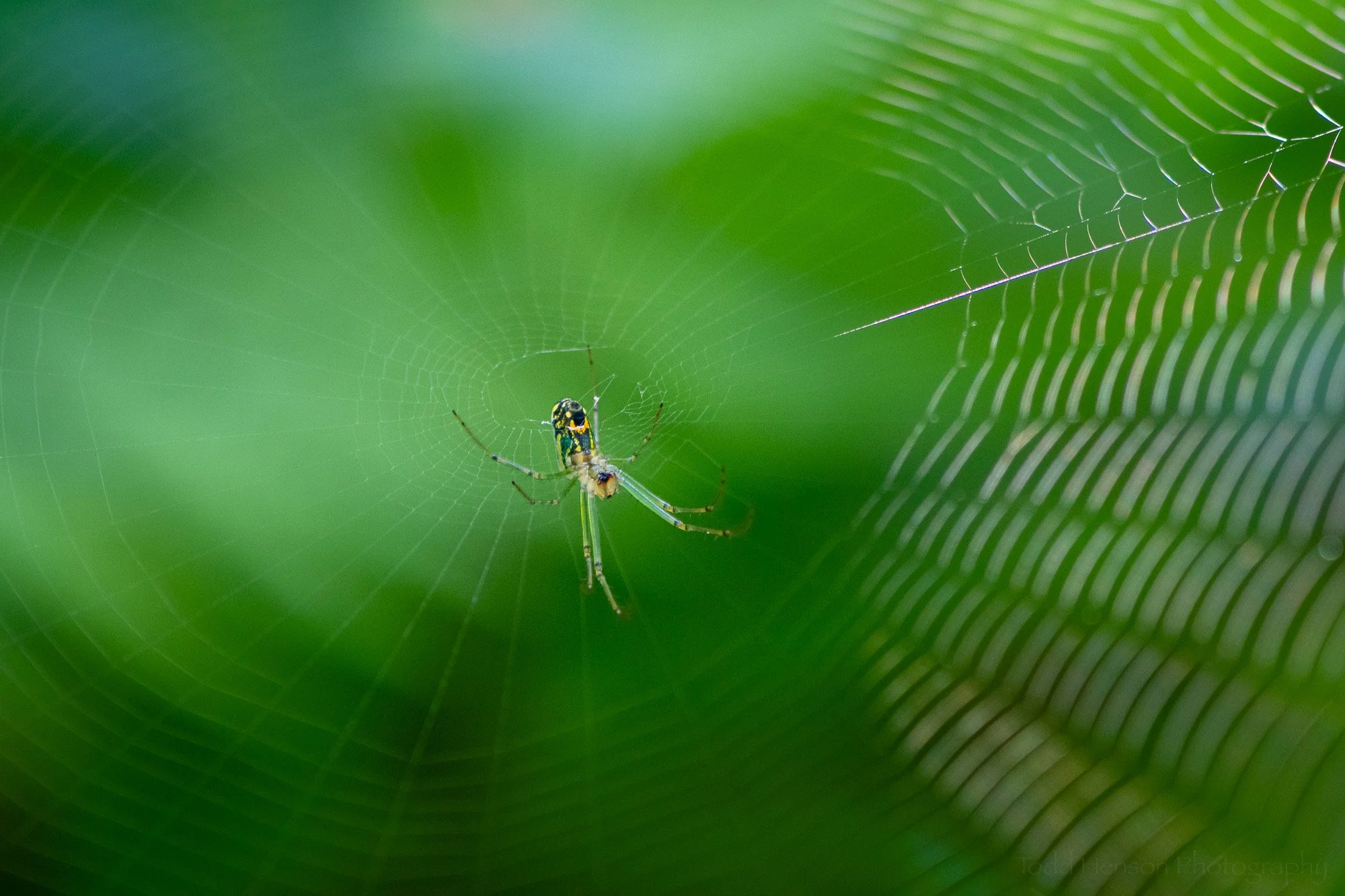Male northern cardinal and blueberries
My folks have several blueberry bushes that some years provide great tasting blueberries and other years are almost completely eaten by wildlife before they’re fully ripe. The best blueberry years are those when there’s netting over the bushes, but sometimes there’s just not enough time to deal with new netting. This year we were trying to put up some make-shift netting, hoping to get some berries, when my father discovered a nest in one of the bushes, which turned out to be the nest of a pair of northern cardinals. And it contained at least three small blue eggs with brown spots, so it was an active nest. Pretty exciting, but also a little disappointing, as we wouldn’t be able to put up netting on that particular bush.
Northern cardinal eggs in a nest
While working around the bushes I took the opportunity to briefly photograph the nest and the eggs, as I’d never seen an active cardinal nest before. But I tried, as much as possible, to stay away from the nest, both so I didn’t disturb it and so I didn’t attract attention to it.
Female northern cardinal reaching for blueberries
Later, after we were finished with the netting, I setup at a distance and photographed some of the activity in the blueberry bushes. Many of the local birds are somewhat used to the presence of people, which makes photographing them much easier. And most years my folks have bird feeders, though this year they don’t as local authorities have recommended taking down all bird feeders because of a bird illness sweeping through the region that they think might be spread faster when birds congregate at feeders. Thankfully, I didn’t see evidence of this illness with these birds.
The female northern cardinal flying between branches
Mmmm, mmmm good! The female northern cardinal feasting on a blueberry
But being used to people, and having such a great food source as a blueberry bush with ripening berries, it was fairly easy to get some interesting photographs of the pair of cardinals. I setup at a bit of a distance from the bushes, right between some raised garden beds where my folks grow vegetables. I watched as the male cardinal sometimes turned to look at me as he heard the camera’s shutter click. And I watched as the female pulled down and ate several blueberries.
Though somewhat exposed up top, from the side the female northern cardinal is difficult to see in her nest
If you’re curious how to tell the male and female apart, look closely at the coloration. The male is a brighter red, whereas the female has some reddish tones to her feathers but is otherwise a duller color, more tan or brown. The dark feathers around the beak of the male are black, but on the female they are closer to gray.
Are you still there? One final look at the male northern cardinal peeking around some branches at me
We were hopeful this might turn into a productive nest but also concerned the cardinals had chosen a poor location. The nest was somewhat exposed up top. And the blueberry bushes, though containing plenty of food for the cardinals, also attracted many other birds and critters. I don’t know that building a nest right in the middle of a local food source for other animals was a good idea. Unfortunately, this did prove true, as several days later my father found the nest empty. I’m hopeful this was early enough in the season that the pair of cardinals found a better location to try again and that perhaps this story, even with the initial losses, had a happy ending.
Do you enjoy these posts?
Sign up to receive periodic emails with updates and thoughts. Don’t worry, I won’t spam you. And please consider purchasing artwork or products from my online store, and using my affiliate links in the sidebar to the right when shopping online.
I appreciate your support!
